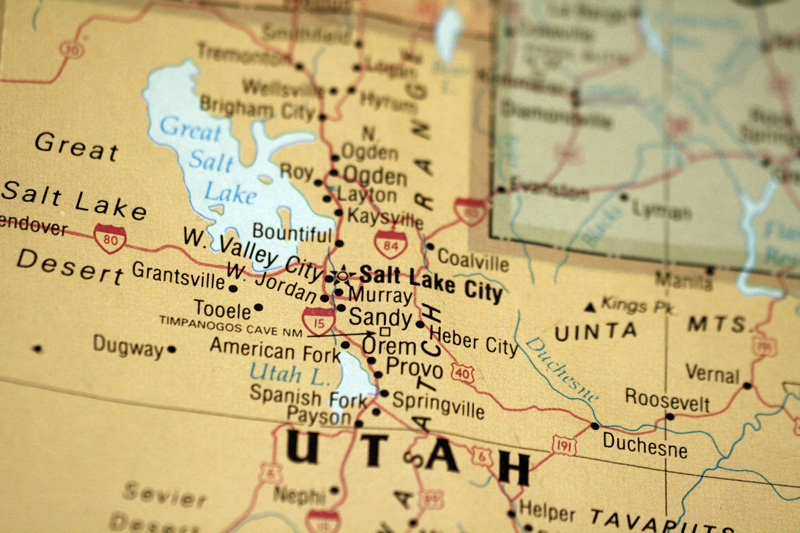Mayor Becker’s office issued this press release today. I’m glad to see the largest city on the Wasatch front encouraging smart conservation practices and not trying to force people to do things.
The biggest water usage footprint of the average Utah home is the exterior landscaping. Many studies indicate that water waste occurs due to misaligned sprinklers; if your sprinklers are watering asphalt, sidewalk and other non-permeable surfaces, you are wasting water. In addition to misalignment, overwatering is also recognized as a significant water waster. Consult with your local Ag Extension or invest in one of the many intelligent sprinkler controller out there that have soil saturation sensors or the nice fancy ones that connect to the internet and use online weather forecasting to control sprinkling schedules. I also think that Utahans (Utahns if you’re a traditionalist) need to seriously rethink their love affair with eastern grasses and embrace xerous and native-plant landscaping.
Indoors, the first biggest water waster is leaky plumbing. You should have your plumber check all faucets and fixtures (toilets especially) for leaks at least once a year to make sure that you’re not sending thousands of gallons of good drinking water to the sewer. Another potential (and frequently overlooked) water-waster is your old-outdated water softener. Older softeners usually backwash a lot more than they really need to and can possibly be cleaning themselves more frequently than they actually need to. It’s not hard to adjust the settings on most older models, take the time to do that while enjoying the benefits of good clean water. When your system is finally worn out, consider replacing it with the latest high-efficiency technologies. For expert help, call the local Utah Clean Water Crusader at 801-921-7889.
* * *
PRESS RELEASE
April 13, 2015
Contact: Art Raymond
801-547-2659
Mayor Becker Takes Action to Protect City Water Supply in Face of Climate Change Impacts
Mayor Ralph Becker is working to protect Salt Lake City’s water supply in the face of another year of below average snow levels and spring run-off for Salt Lake City by declaring a Stage 1 Advisory in accordance with the Salt Lake City Water Shortage Contingency Plan. A Stage 1 Advisory calls for water customers to be watchful in regards to water use by avoiding overwatering and water waste.
The Salt Lake City Public Utilities Department is closely monitoring water supply levels and demand patterns to determine if further declarations are warranted. While the City’s current overall water supply is about 90 percent of normal, stream flows are very low, prompting the Stage 1 Advisory.
“This careful water management approach is part of our overall efforts to adapt to, and mitigate, the impacts of climate change that are already upon us,” said Mayor Becker. “Conservation, efficiency and sustainability guide how we approach all our goals for the City and I hope residents will join us in this effort.”
“Unfortunately, Salt Lake City is not immune to the realities of the climate change crisis and our recent below average snow fall is a clear sign of that. We are doing everything we can to address this problem for the short and long term.”
Mayor Becker has been actively working to address climate change at both the local and national level for many years. In addition to implementing a wide array of cutting-edge sustainability practices in Salt Lake City, Mayor Becker also served on the White House Climate Change Task Force which developed recommendations for the federal government on mitigating the damage caused by climate change in local communities like Salt Lake City.
“Last year, we were able to carry over a portion of our water allocation and save it in our reservoirs in the event of another year of below average snowpack,” said Salt Lake City Public Utilities Director Jeff Niermeyer. “This year’s snow levels mean that it is important to maintain that goal of reserving water for future need, should this pattern of low snow fall and runoff continue into next year.”
The Water Shortage Contingency Plan outlines five water shortage stages triggered by water supply levels, stream flows, and water demand. It also provides recommendations for actions within each stage aimed at reducing water demand to levels that reflect current supply and future water needs.
Public Utilities offers these simple recommendations for using less water:
• Adjust sprinkler controllers to reflect the season and weather
• Check sprinkler systems for broken or misaligned spray heads
• Check indoor faucets and fixtures for leaks and repair promptly
• Sign up for a free sprinkler check by calling 1-877-728-3420
• Visit http://slcgardenwise.com/ for water-saving tips and landscape information
For more information on how to reduce water use or to view the Water Shortage Contingency Plan, visitwww.slcgov.com/waterconservation or contact Stephanie Duer, Water Conservation Manager at 801-483-6860 or stephanie.duer@slcgov.com.
